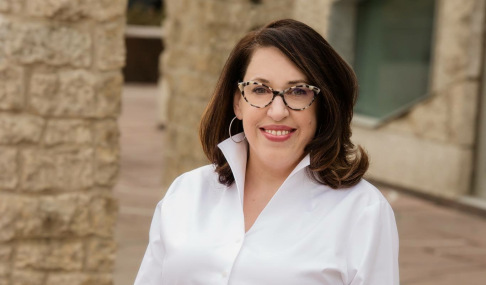
Community first: Q&A with emergency management consultant Alison Poste
November 10, 2022
By
Maria Church

Meet Alison Poste, an emergency management professional based in B.C. who has been involved in a good share of Canada’s costliest disasters – from the southern Alberta floods to the most recent fire impacting Lytton First Nation.
Poste has a passion for community-driven solutions to disaster management. Her current role is serving as the emergency planner for the B.C. Association of Aboriginal Friendship Centres (BCAAFC), working in collaboration with the 25 friendship centres across B.C.
Poste sits on the Avert editorial advisory board, an assembled team of practitioners from coast to coast lending their experience and networks to help steer editorial content.
We caught up with Poste to get her take on challenges and opportunities facing disaster management in Canada.
Avert: What are your current and past roles as they relate to the field of disaster and emergency management?
Poste: Prior to being in emergency management, I was a residential real estate appraiser. In inspecting hundreds, if not thousands of structures, I developed an understanding of how structures are impacted by floods, fires and seismic activity. This helped me to understand the physical impacts of disasters, and gave me a particular appreciation for the associated insurance implications.
My recent work has included contractual work across the emergency management spectrum. I have recently worked with municipalities in their submission of disaster financial assistance documentation and as a section chief for the recent fire impacting the Lytton First Nation. My prior experience included response work on the Fort McMurray Fire and as the manager, disaster recovery, following the southern Alberta floods in 2013.
In my current role with the BCAAFC, I work with the 25 friendship centres in the province to co-develop and improve emergency planning capacity.
Avert: How long have you been involved disasters or related fields and what are some career highlights?
Poste: I’ve been involved in disaster management for about 10 years, with appraisal experience for about a decade prior to that.
As far as career highlights, I would point to my recent work with the Lytton First Nation on the recent fire response, and the work I did jointly with the Lytton community in their recovery. I also recently co-authored a paper outlining best practises in the virtual management of disasters, published in the Journal of Emergency Management, a peer-reviewed journal. I have also been fortunate to be the recipient of a number of awards for my work on emergency and post-disaster efforts.
Avert: What do you see as the biggest challenge facing emergency managers and the disaster management system in Canada?
Poste: I think we need to embrace a shift to the Sendai approach to disaster risk reduction – an approach that involves understanding the actual needs of the whole community, engaging and empowering all parts of the community, and strengthening what already works. To understand the needs of the community, we need to engage with those communities.
In my view, we need to rely less on top-down emergency management solutions, and really focus on building community capacity, and supporting that capacity where we can through sustained dialogue. This needs to be a focus not only during a disaster, but inviting often under-represented groups to the table in the planning and preparedness stages. Drawing on more perspective and viewpoints will lead to improved outcomes across the board.
Avert: Similarly, what do you see as the biggest opportunity?
Poste: In B.C., ours has been the first jurisdiction in Canada to adopt the Sendai Framework, so I see that as quite promising. My colleagues at EMBC [Emergency Management BC] are doing great work on developing comprehensive legislation that better reflects the supports and needs of the whole community.
Print this page